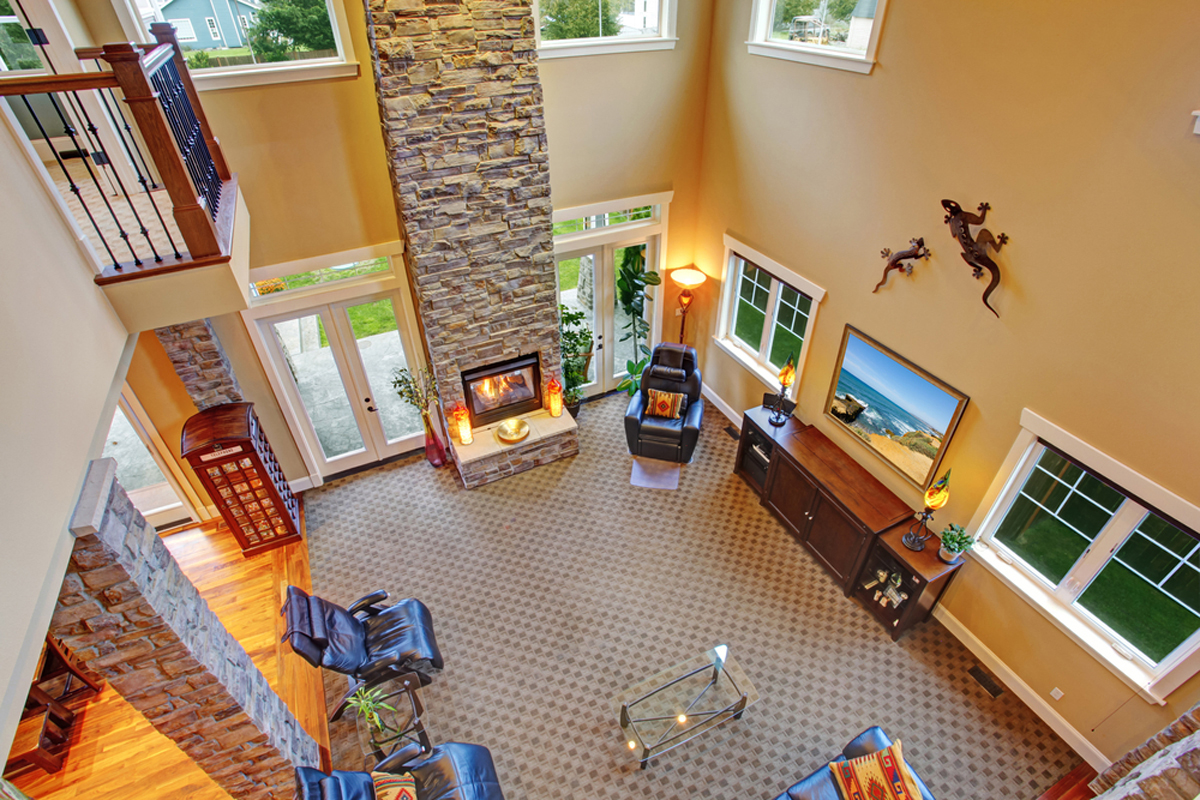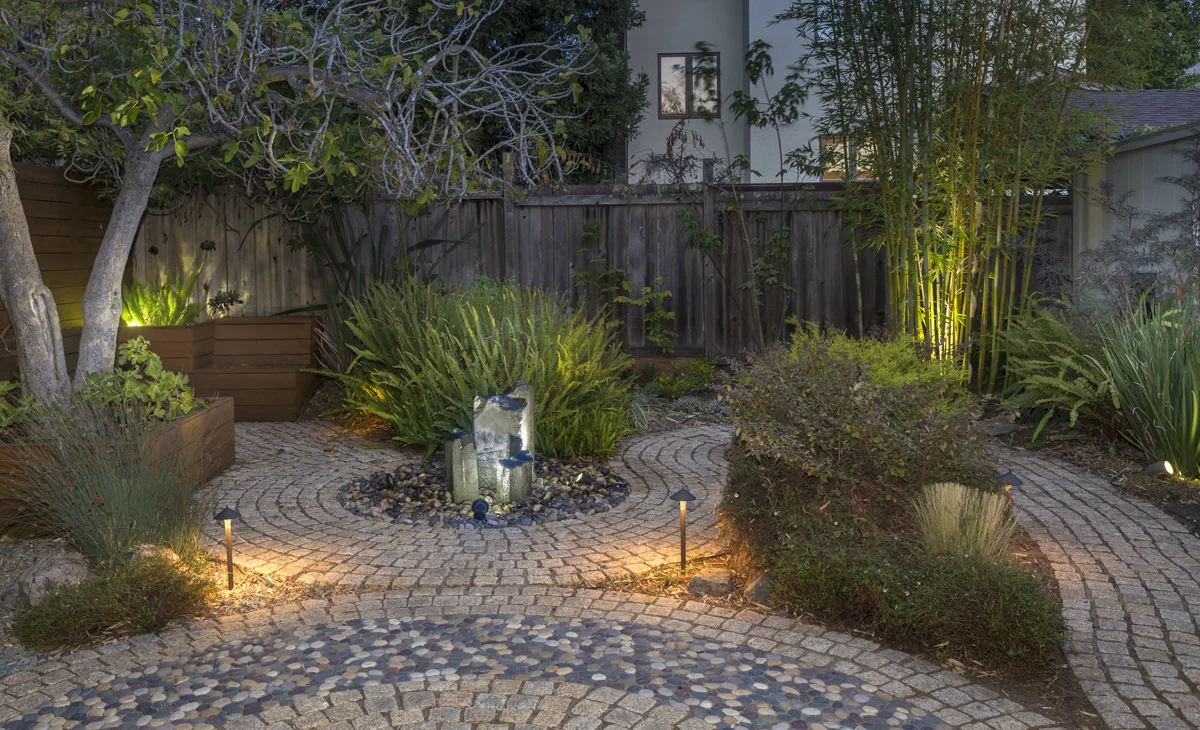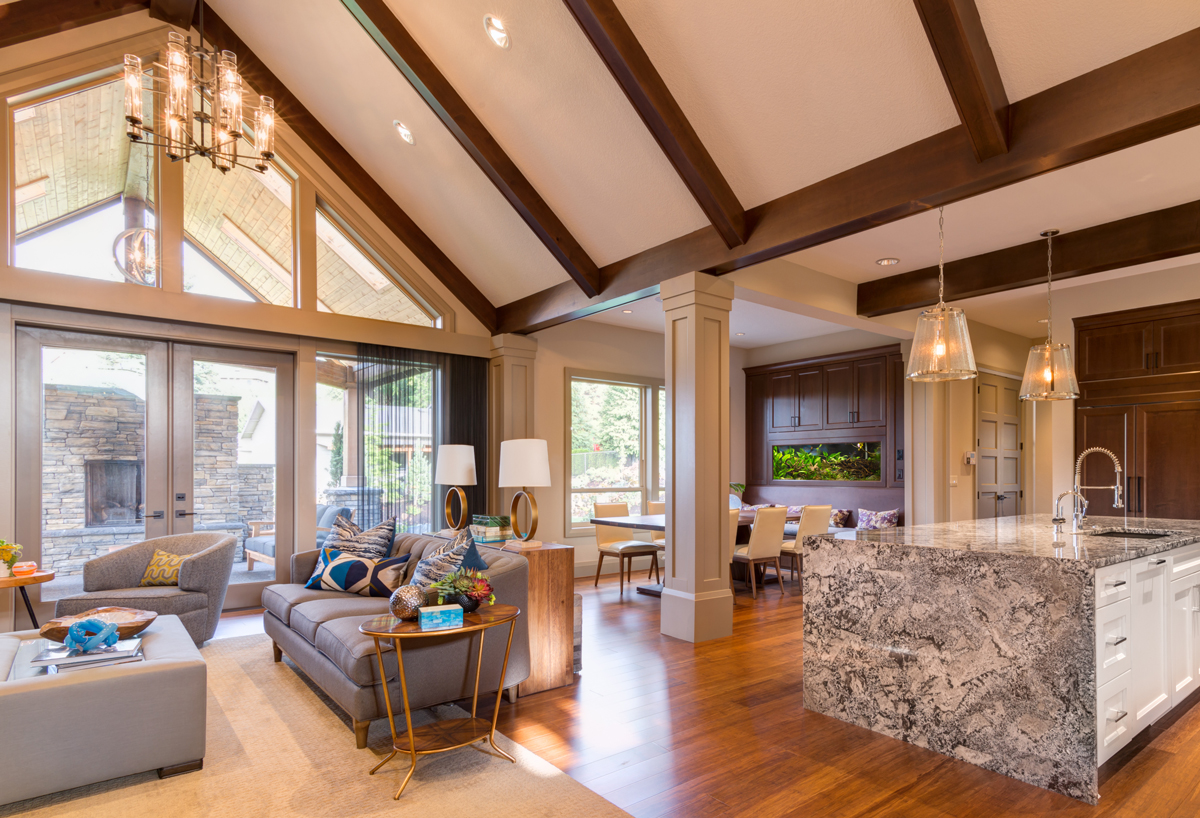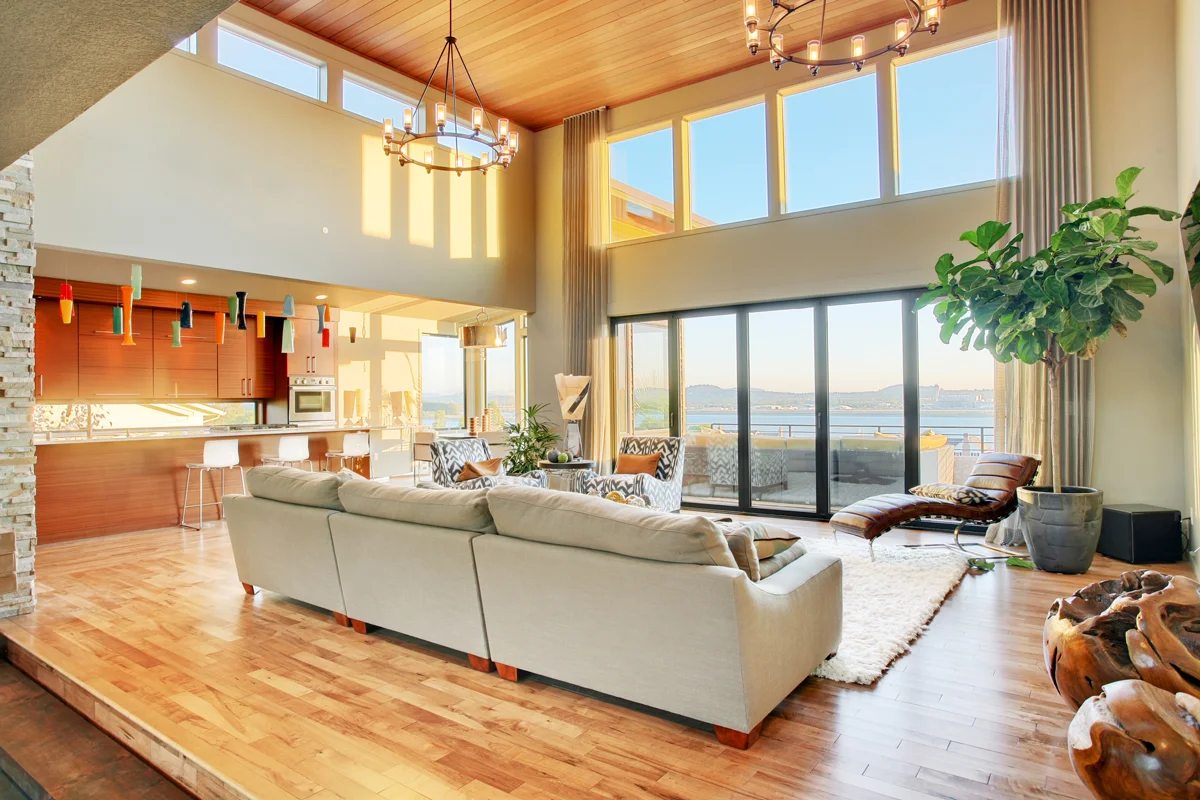Lighting a room with a high ceiling

Rooms with high ceilings feel light and airy, spacious and grand, but can also be a bit of a challenge to light adequately. You chose your great room for a reason. You love that feel of spaciousness, so you want to keep that feeling after dark, too.
We are often asked by clients to visit them after dark, so we can see for ourselves what dark dungeons their great rooms turn into once the sun has set. Almost all homes are shown and purchased during the day-time, so many homeowners are dismayed when they realize that everything looks kind of gloomy at night. The huge uncovered windows that allow fantastic views during the day turn into large black surfaces. This adds tremendously to the dark and cold feel of the room. If you are in a single home, one simple solution is to add soft landscape lighting outside the windows illuminating the deck, trees or architectural details.
We often see recessed or track lights as the only illumination when we are called in to help with the lighting in a home with a great room. The problem is that they are far, far away from the activity below and as the only illumination they make the space look bland and undefined like the lobby in a hospital. Good lighting composition provides visual focus points. With lighting you can draw the eye towards a soaring fireplace, an antique sideboard or artwork on the wall. Again the principle of layering your light is key. You’ll hear that a lot from me.
First establish what your activity zones are. What do you primarily do in the great room? Curl up with a book in front of the fireplace, entertain, watch TV, play your grand piano, or all of the above. Usually floor and table lamps take care of the “pools of Light” that are functional while adding a cozy charm.
A grand chandelier or, in contemporary homes, a cluster of pendants that are suspended to about the height of a “regular” ceiling will fill in the upper to mid layer
There are lots of tips out there about sizing and hanging height, but a lot depends on the actual lay-out and design of the room and what looks the best. A two-story room with two levels of windows might ask for the chandelier to hang level with the line of the top windows. For sizing a chandelier the rule of thumb is: The chandelier diameter in inches = Room Length + Room Width in feet. Airy, light chandeliers can be larger in scale and a long, narrow room can often handle two chandeliers.
In the design world you hear about the “Rule of Thirds”. In this case it can be a guideline for chandelier placement: The bottom third of the room is for furniture and portable lighting, the middle layer for art and accent lighting and the top third for other lighting, like chandeliers and pendants.
Wall sconces can bridge the gap between the top layer of lighting and the portable floor and table lamps. Sconces can provide general soft illumination or they can be used as up-lights to highlight the ceiling construction and other architectural details. Down-light sconces can add light to the lower parts of the walls. It’s all about what effect you want to achieve.
Track lighting is ideal for illuminating artwork and whatever else you want to have stand. out Just don’t try to illuminate people with track lighting. Sounds like such a no-brainer, yet we constantly see tracks as the sole illumination for a room with the glary heads aimed directly into that path people enter the room. Track spots are by nature focused lights and absolutely wonderful for what they were designed for. In a room with a high ceiling you can illuminate artwork on the walls, in the process make the room look wider and as a bonus get the reflected light as ambient light.
Track lighting and strip lights can be used for outlining beams and other interesting architectural details while providing overall light. Strip lighting can also be hidden behind soffits for added interest.
Some designers love outlining coves and soffits, but personally I find that it has to be done very discreetly to avoid that the room resembles a hotel lobby or a casino (unless that’s the look you are after.)
Last, but not least: LEDs rule in high ceilings! Think about not having to change the bulbs in the ceiling for the next 20+ years. Since you really don’t want to put up scaffolding more often than necessary do invest in the best LEDs you can possibly find. This is NOT where you want to save.












